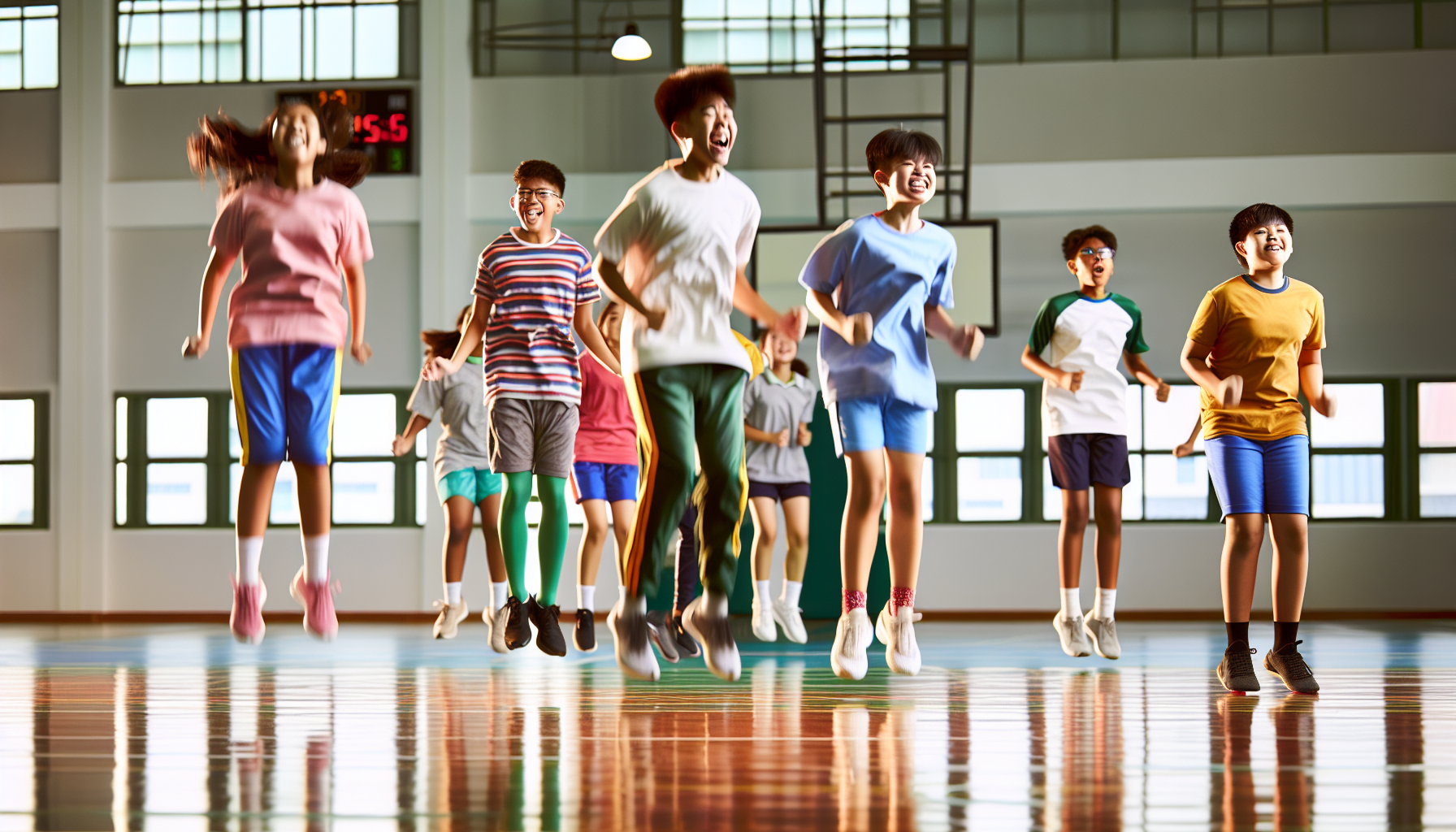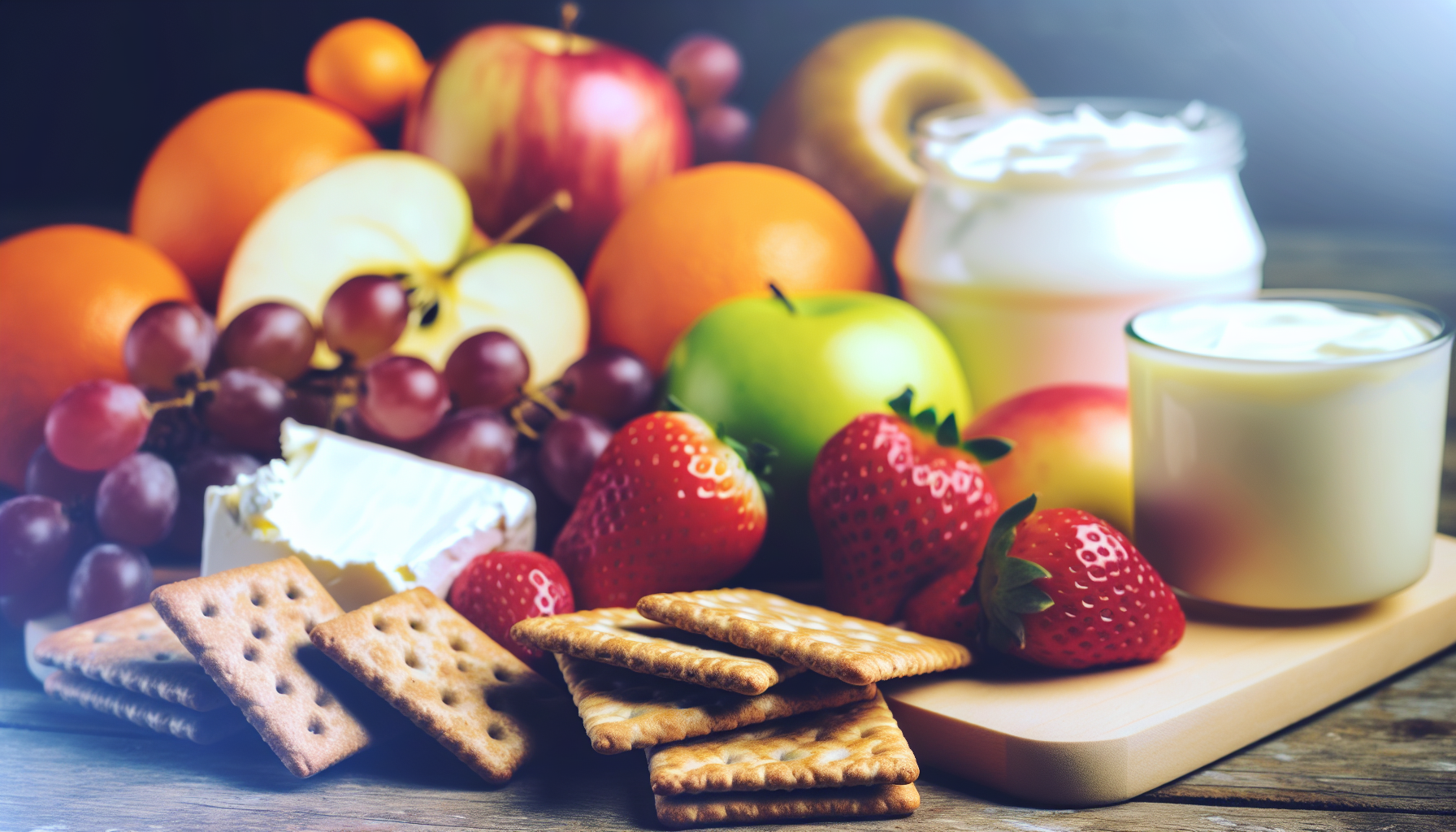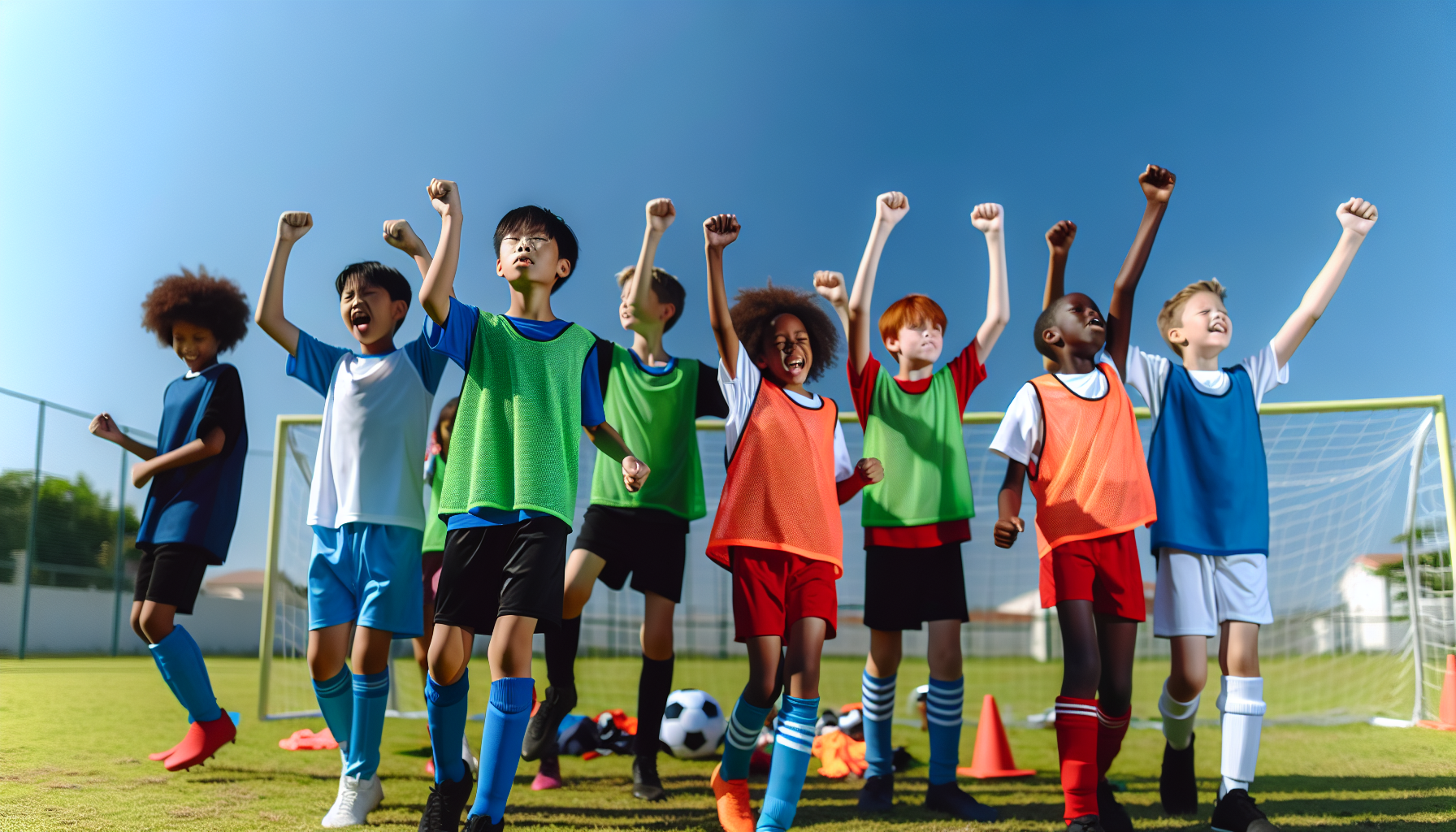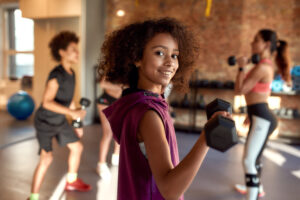
Teens, are you ready to redefine what working out means? Say goodbye to boring routines with our fun and effective workouts for teenagers crafted just for you. From pulsating dance classes to team sports that double as social hangouts, our guide is packed with activities designed to mesh seamlessly with your lifestyle and interests. Embrace the joy of movement and watch fitness transform from a chore to an adventure.
Table of Contents
ToggleWorkouts for Teenagers: Key Takeaways
- Regular physical activity for teenagers leads to stronger muscles and bones, maintains healthy weight, promotes lifelong health habits, and significantly improves their mental health.
- Incorporating variety in workouts, including fun activities, group exercises, and gamification techniques, keeps teenagers engaged and motivates them to sustain a regular exercise routine.
- A balanced workout schedule that includes strength training, cardiovascular activities, flexibility and balance exercises, alongside proper nutrition and consistent motivation, is key to fostering healthy habits in teenagers.
Teen Fitness: Why It Matters
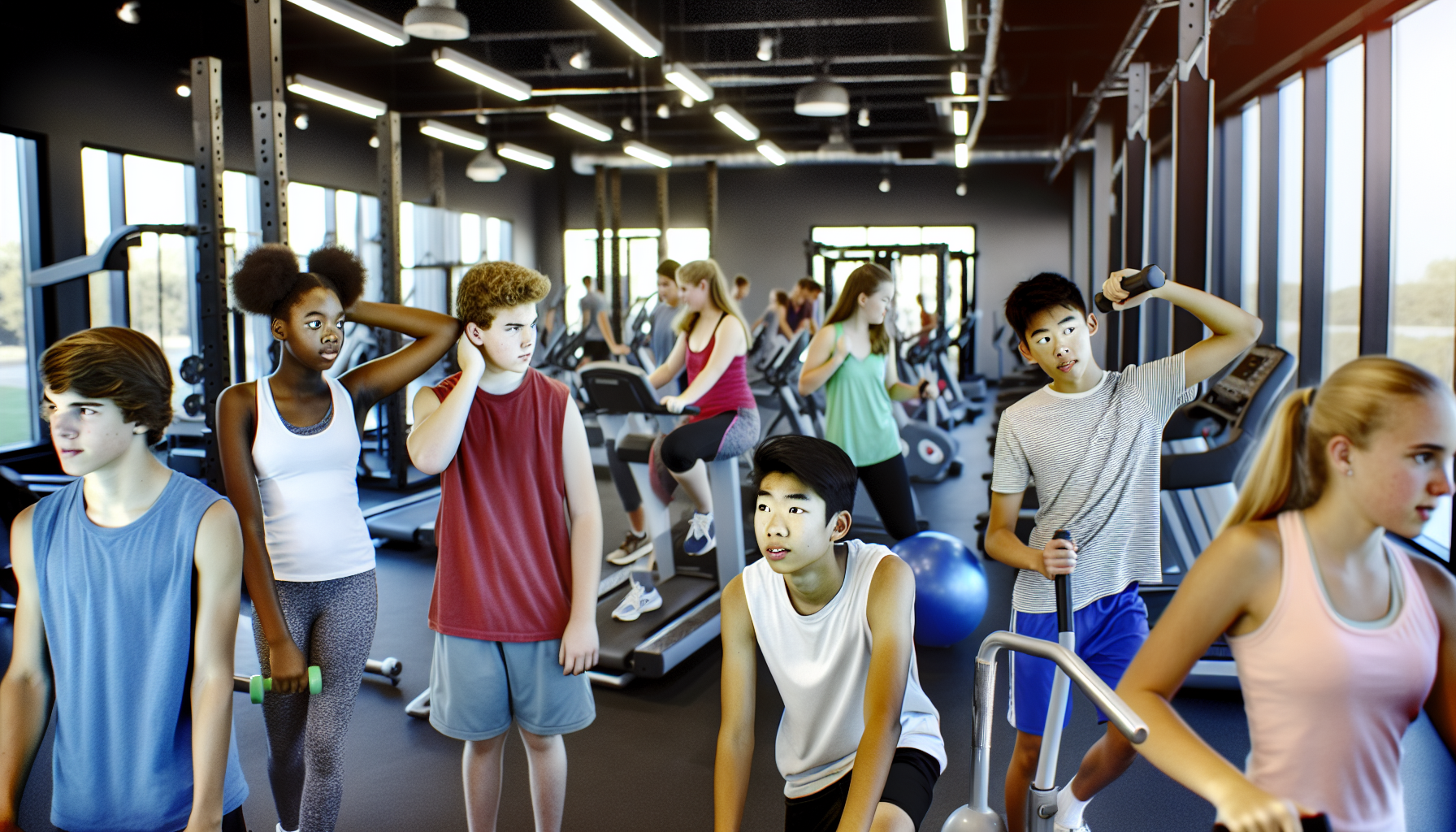
Teen fitness is of utmost significance. In an age where screens often dominate our daily lives, it’s more important than ever to get moving. And the benefits? They’re massive. Regular physical activity leads to improved overall health and reduced stress, both of which are key factors in building healthy habits.
Regular exercise bestows teenagers with the following benefits:
- Stronger muscles and bones, contributing to injury prevention and lifelong physical health
- Maintaining a healthy weight by metabolizing stored fat and enhancing metabolism due to increased muscle mass
- Promoting the development of long-lasting, healthy habits in teenagers
So, start exercising and discover how exercise feels as you experience the difference and lose weight!
Physical Benefits
Exercise offers extensive physical benefits for teenagers. Teenagers can maintain a healthy weight and lower their risk of chronic conditions like type 2 diabetes, heart disease, and high blood pressure through regular physical activity. But that’s not all. Bone-strengthening exercises during teenage years improve bone density and strength, reducing the risk of diseases such as osteoporosis later in life. Some of the physical benefits of exercise for teenagers include:
- Maintaining a healthy weight
- Lowering the risk of chronic conditions like type 2 diabetes, heart disease, and high blood pressure
- Improving bone density and strength, reducing the risk of diseases such as osteoporosis later in life.
Regular exercise assists teenagers in:
- Building muscle strength
- Promoting calorie burn
- Supporting joint health, particularly during growth periods
- Enhancing the immune system, aiding in reducing the frequency of colds and other viruses among teenagers
Undeniably, exercise plays a pivotal role in physical health, and a health coach can guide you through this journey.
Mental and Emotional Benefits
However, research show the advantages of exercise for teens aren’t confined to physical aspects only. Exercise also offers a host of mental and emotional benefits. Regular exercise can help reduce stress hormones in teenagers, leading to a slower heart rate and lower blood pressure. It also increases endorphins and serotonin, which improve mood and reduce symptoms of depression. Physical activity has also been shown to boost self-esteem and self-image in teenagers, with additional benefits from exercising outdoors and improvements seen through engagement in sports.
By augmenting blood flow and oxygen to the brain, exercise also bolsters psychological fitness among teenagers, potentially improving:
- academic performance
- creativity
- energy levels
- task management
- creative thinking
It even provides a critical support system for teenagers facing challenges, aiding in addiction recovery and serving as an outlet for reducing stress, which can contribute to better mental health outcomes.
So, the question isn’t whether to exercise, but rather, why wouldn’t you?
Incorporating Fun into Workouts
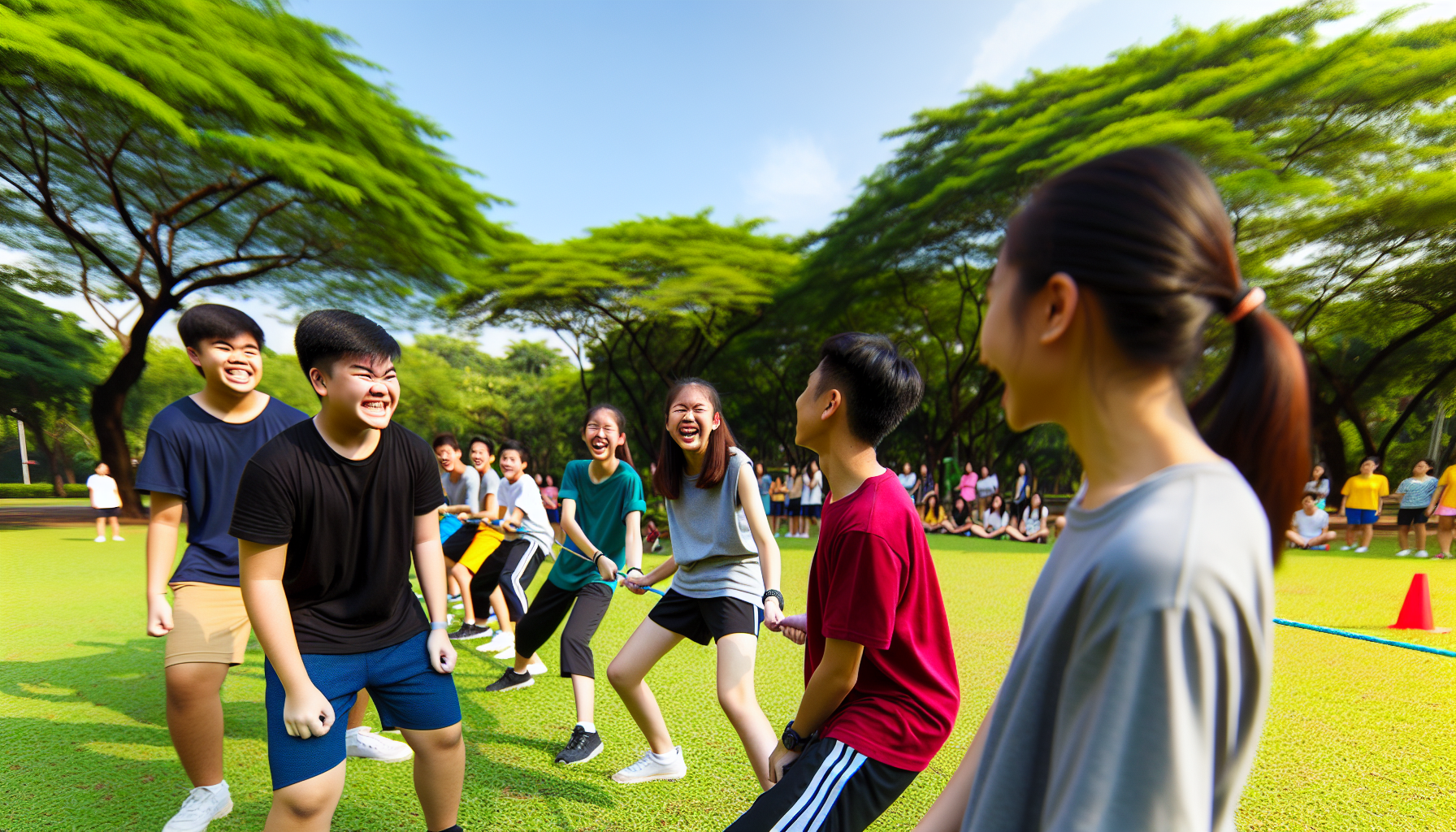
However, it’s undeniable that exercising can occasionally feel burdensome. That’s where the fun comes in. Yes, workouts can be fun! Innovative fitness programs tailored for the teen demographic offer diverse ways to make exercise enjoyable. A diverse range of exercises, like playing frisbee, dancing, or biking, maintains the interest of teenagers in workouts, crucial for sustaining their enthusiasm and motivation. The influence of group activities should not be underestimated either. Working out with friends or participating in team sports can make exercise more fun and socially rewarding.
Add in elements of gamification, like fitness trackers or music, and you’ve got a recipe for a workout routine that feels less like a chore and more like a game. So, why not give it a try? Embed enjoyable activities like dance or sports into a regular workout regimen and foster a lasting passion for movement and exercise among teenagers.
Variety is Key
Just as variety enriches life, it adds value to workouts too. To stay engaged and committed to a fitness regimen, teenagers benefit significantly from the inclusion of varied exercises in their workouts. The periodic introduction of new exercises not only propels teenagers’ progress but also lessens the risk of injuries stemming from repetitive movements. For effective workout adaptation while preventing excessive change, two to three variations for each exercise or movement type are recommended for teenagers.
A variety of exercises, such as bodyweight movements, HIIT sessions, and unique activities like dance, are essential for creating a well-rounded and enjoyable workout routine for teenagers.
Group Activities
Group activities are mutually beneficial in the realm of teenage fitness. Some examples of group activities include:
- Jazzercise GirlForce classes that provide a social setting specifically for young women
- Rising Gymja Warrior classes that offer a team-oriented environment with obstacle course-style workouts suitable for teenage groups
- Group mermaid fitness classes that can be shared with friends
These group activities bring a social element to the workout experience and can make exercising more enjoyable for the teenage age group.
Team sports tend to build a sense of community and teach life values like teamwork, sportsmanship, and empathy through their social aspects. And signing up for school sports can offer teenagers commitment to regular exercise, serve as a venue to connect with new workout buddies, and provide access to sports medicine professionals if needed.
Engaging in activities they are passionate about allows teens to participate in exercises, thereby increasing their activity levels. Some examples of these activities include:
- Skateboarding
- Hiking
- Rock climbing
- Dance forms
Even dance forms offer teenagers cultural education and community connection, with many styles having deep historical significance.
Gamification
Gamification revolutionizes the fitness world. It involves incorporating game-like elements into workouts to increase engagement and make the activities more enjoyable. For instance example, Gymja Warrior engages teenagers with gamified workouts through obstacle courses, helping exercise feel more like a playful challenge than a chore.
CrossFit Kids programs gamify workouts for teens by prioritizing mechanics, consistency, and then intensity, fostering a sense of accomplishment as they progress. With gamification, working out becomes less about the grind and more about the fun.
Strength Training for Teenagers
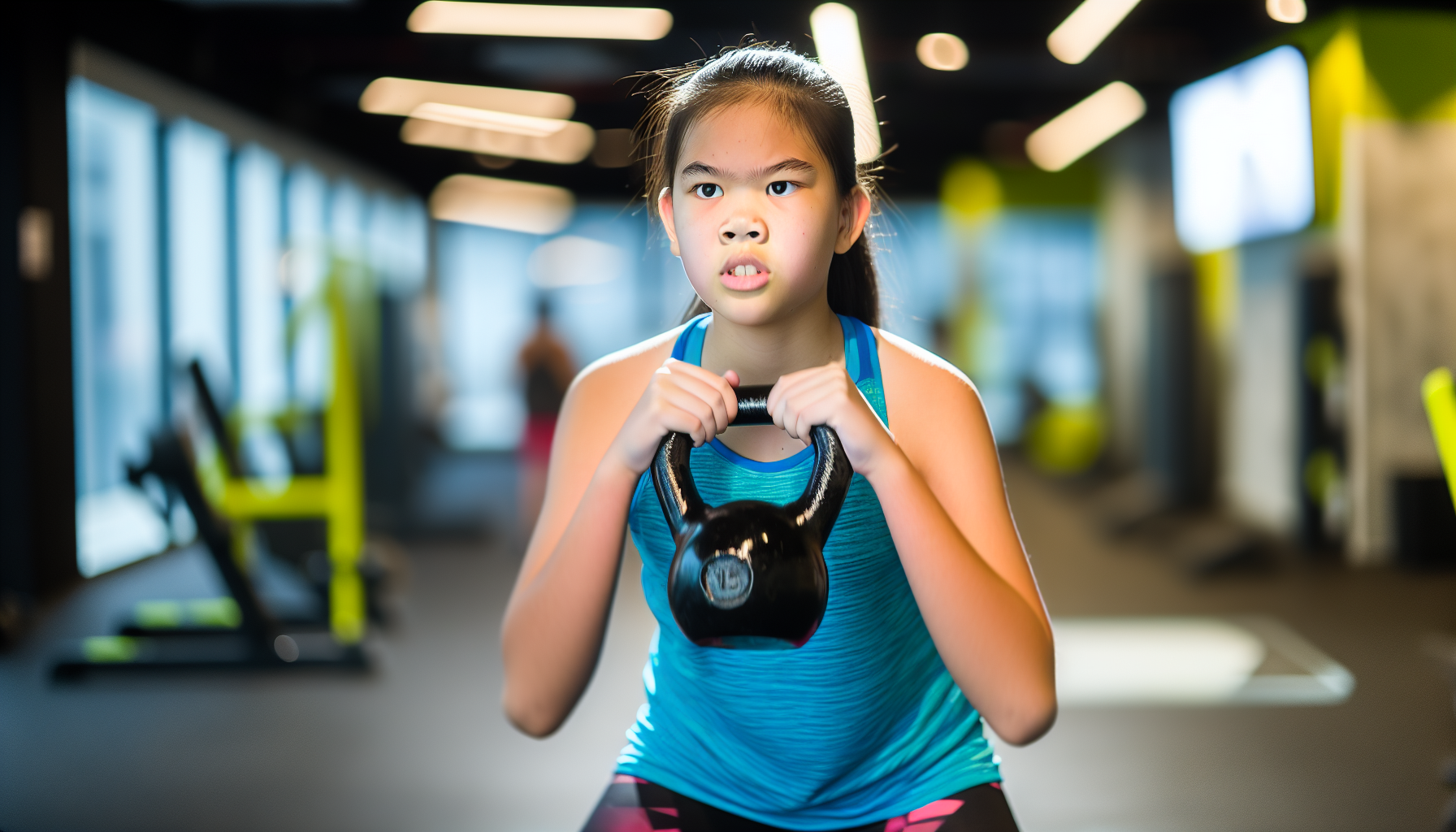
Another critical part of a teenager’s fitness journey is strength training. But it’s not about lifting the heaviest weights. For teenage beginners, it’s more beneficial to focus on form with lower weights and higher repetitions. This approach ensures proper technique and prevents injury. Progressive overload, a key principle in strength training, can also be applied. This principle involves gradually increasing the weight, reps, depth, or intensity of exercises over time to build more strength, ensuring steady progress starting with minimal weight focused on form, before adding more weight.
To keep things fresh and interesting, avoid doing the same exercises repeatedly and instead, integrate different exercises and variations such as:
- straight sets
- pyramid sets
- supersets
- compound sets
- giant sets
can provide teenagers with variety in their workouts and prevent boredom. And as teenagers advance in strength and technique, free weights can be gradually introduced to further enhance their strength training routine.
Upper Body Exercises
In terms of strength training, upper body exercises hold significant importance. Here are some key exercises for building upper body strength:
- Bench presses, utilizing either barbells or dumbbells, are fundamental for building chest and arm strength.
- Overhead presses are effective for developing shoulder strength.
- Pull-ups are vital for increasing upper back and lat strength.
- Push ups are essential for enhancing chest, shoulder, and tricep strength.
- Side lateral raises and face pulls, which target the deltoid muscles, are essential for shoulder stability and a visibly wider upper body.
The arms and shoulders should also be given due attention. Exercises like standing cable curls and bicep curls with dumbbells or resistance bands offer a simple and effective method to increase arm strength. With a focus on shoulder exercises, teenagers can engage in triceps workouts to fully enhance their upper body strength.
Lower Body Exercises
However, the legs and lower body should not be neglected. Some exercises for leg development include:
- Squats: a fundamental exercise that focuses on proper form and squat depth to ensure hips are parallel with the knees.
- Lunges: a versatile leg exercise that can be enhanced with the addition of dumbbells or a weighted vest for further leg strengthening.
- Calf raises: an exercise that strengthens the lower legs and can be performed using bodyweight or added resistance.
By incorporating these exercises into your workout routine, you can effectively target and strengthen your lower body.
Developing the hamstrings and glutes, vital components of the posterior chain supporting overall lower body strength, is of paramount importance.
Core Strengthening
Core strengthening goes beyond merely achieving a six-pack. It’s about developing good posture and stability. Here are some exercises that can help:
- Plank, including forearm and side planks, actively engage the entire core.
- Dumbbell V-sit cross jabs and Russian twists are effective for targeting the obliques.
- Leg raises and bridging exercises focus on the lower abdominal muscles and the core, enhancing strength in these areas.
- Even exercises like the Superman and Bird Dogs improve stability and coordination, and can be modified for an additional challenge.
In addition, teenagers can carry out core strengthening exercises at home, eliminating the need for a gym, thereby making it a cost-effective and accessible strength-building method.
Cardiovascular Activities for Teens
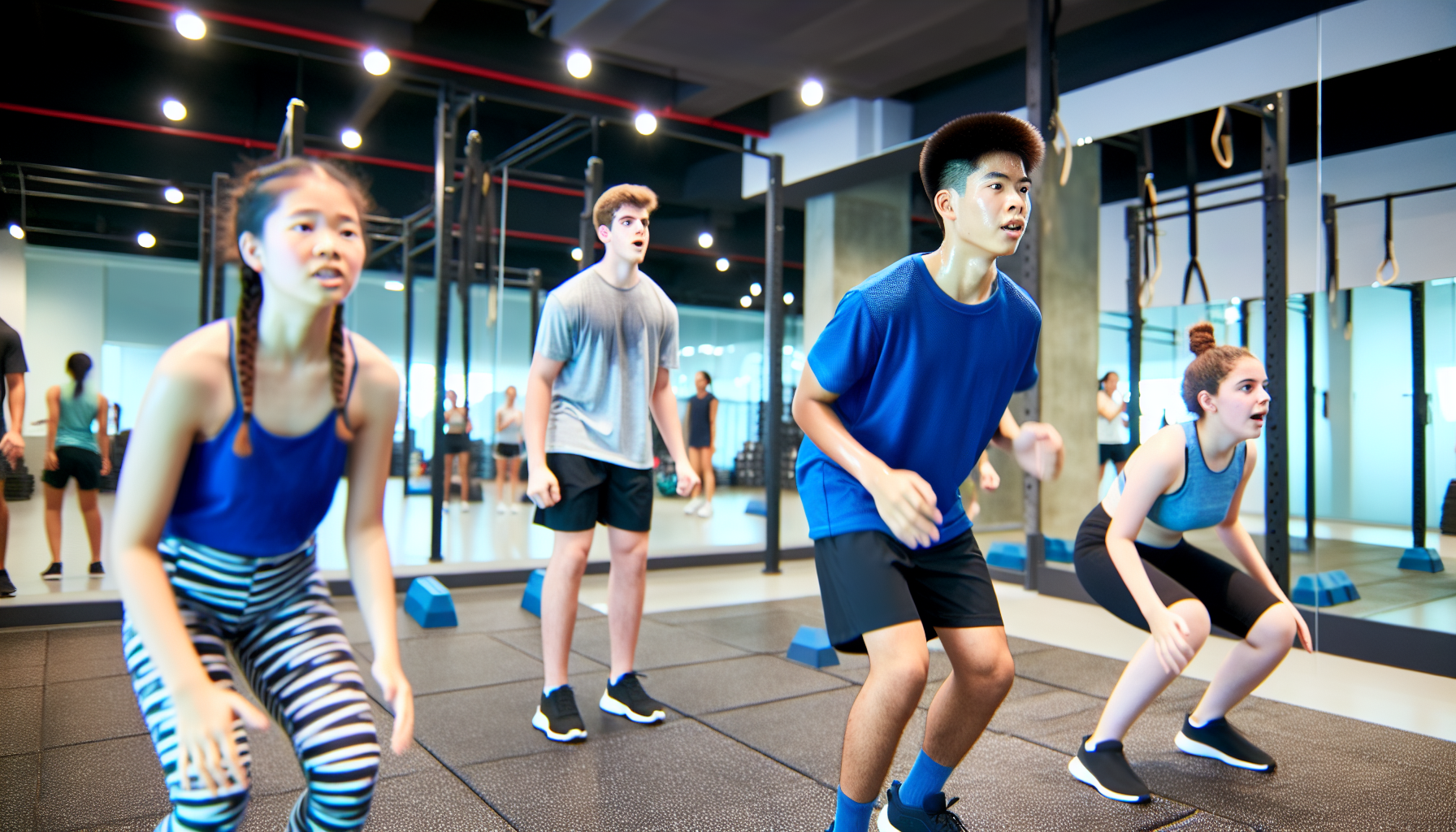
Time to get those hearts racing! Cardiovascular activities, from aerobic exercise to sports and dance, are essential for teenage fitness. Here are some examples of cardiovascular activities for teenagers:
- Aerobic exercise: This strengthens the heart and lungs, crucial for improving cardiovascular fitness and overall endurance.
- Sports: Activities such as badminton, basketball, hiking, swimming, and soccer provide effective aerobic exercise for teenagers.
- Dance: Dancing is a fun and energetic way to get your heart rate up and improve cardiovascular fitness.
Additionally, balance training can be a beneficial aerobic workout for teens, particularly for those with diabetes, high blood pressure, or high cholesterol.
High-Intensity Interval Training (HIIT)
High-Intensity Interval Training (HIIT) brings about a major shift in the fitness world. Characterized by short, intense bursts of physical activity, alternated with periods of rest or lower-intensity exercise, HIIT is particularly effective for teens. Engaging in two to three HIIT sessions weekly, each lasting about eight minutes, has been shown to enhance aerobic and muscular fitness in teenagers over six months.
A simple HIIT session might involve 30 seconds of intense exercise like sprinting or burpees, followed by 30 seconds of rest, repeated for eight cycles.
Sports Participation
Engaging in sports provides a fun and interactive method for teenagers to undertake cardiovascular activities. From basketball to soccer and swimming, team sports not only provide a great workout but also contribute to cardiovascular health, bolstering strength and mobility in teenagers. Plus, teens who regularly engage in sports have an eightfold increased chance of staying active into their mid-twenties.
The rewards extend beyond the physical realm. Sports participation can enhance mood and energy levels, fostering greater engagement and success in daily activities for teenagers. Being part of a sports team offers a sense of community and support, which can motivate teenagers to persist with an exercise routine.
Dance and Aerobics
Dance and aerobics present an exclusive mix of enjoyment and fitness. Dance styles such as jazz, hip-hop, modern, and swing not only appeal to teenagers but are also effective forms of aerobic exercise. And it’s not just about the moves. Dance as a social activity may enhance its cardiovascular health benefits through the relaxation and enjoyment it provides. Even a combination of modern dance choreography with elements of kickboxing and Pilates adds variety to workouts, making them more enjoyable for teenagers.
Zumba, a widely accessible and popular dance fitness program, effectively melds fun with physical activity. Plus, the non-structured nature of dance allows for creativity and can be more accessible as it does not always require memorizing complex moves. Participating in aerobics, cheerleading, or dance teams can be an enjoyable way to improve cardiovascular health while also fostering team spirit and enhancing coordination.
Flexibility and Balance
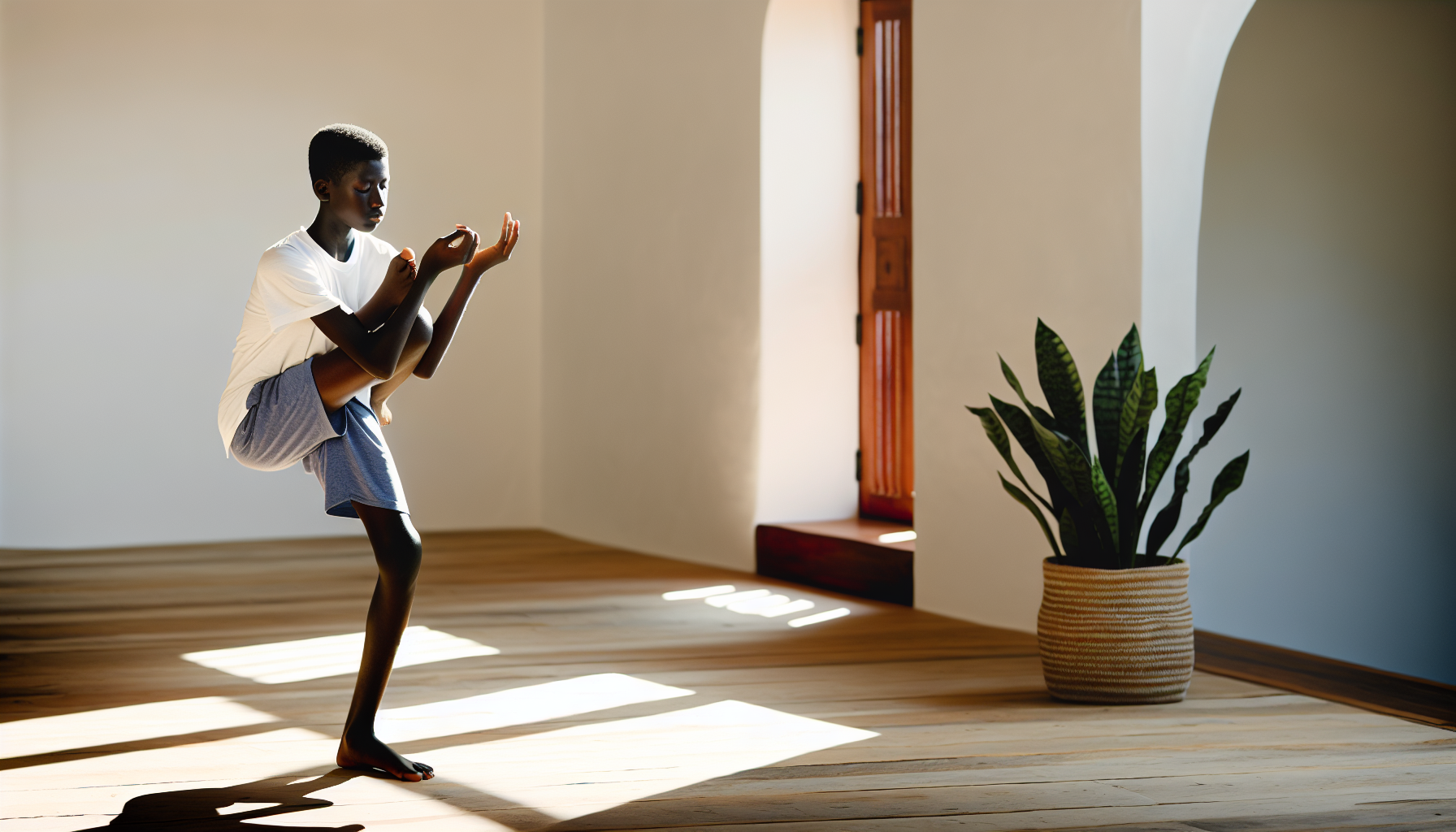
Although flexibility and balance might not be the foremost considerations in fitness, their importance is undiminished. Flexibility is essential for maintaining the range of motion in joints, preventing injuries, and enhancing performance in sports and activities.
Conversely, balance exercises, essential for developing unilateral leg strength, can be performed daily by teenagers, regardless of their age or fitness level. Teenagers can improve their balance progressively by:
- Holding positions for a longer time
- Adding movement
- Closing their eyes
- Progressing from using support to unsupported balancing exercises.
Yoga and Pilates
Yoga and Pilates are excellent modalities for enhancing flexibility, posture, and mental health. Yoga increases flexibility in teens by stretching muscles that are rarely used in daily life, leading to more ease in everyday activities and a lower risk of injury. It also helps improve posture by strengthening the core, increasing energy, and enhancing body awareness, which allows teenagers to sense and correct slouching.
The benefits aren’t limited to the physical aspect alone. Mind-body exercises such as yoga can be a part of teenagers’ weekly workout plans to reduce anxiety and improve mental health.
Stretching Techniques
Despite its simplicity, stretching is a vital component of any workout routine. Dynamic stretching, which involves movement-based stretches, should be part of the warm-up routine as it helps reduce muscle tightness and prepare the body for physical activity. A sample workout plan for teenagers could begin with dynamic stretching exercises like arm circles, leg swings, and walking knees to chest before the main activity.
After a workout, the cool-down should incorporate static stretches such as the quadricep stretch, hamstring stretch, standing calf stretch, and cobra stretch to help muscles recover.
Creating a Workout Schedule
Designing a workout schedule parallels constructing a roadmap to fitness. A balanced workout schedule for teenagers should focus on incorporating:
- Strength training
- Cardiovascular activities
- Flexibility exercises
- Core stability
A 3-day split workout schedule, providing ample rest between sessions, can be beneficial for teenagers post-puberty.
Developing a variety in a workout schedule each week is key to targeting different muscle groups, skills, and abilities. A typical weekly plan may consist of:
- 1-2 days of sports participation
- 1-2 days of strength training
- 1-2 days of cardiovascular activities
- Daily physical movement
And to help keep track of all this, maintaining a fitness journal or utilizing apps can enhance workout efficiency and time management.
Sample Weekly Plan
So, how does a typical weekly workout plan for teenagers appear? It might include three main sessions: lower body and back exercises, a session targeting chest and hamstrings, and one focusing on full-body strength. Beginners can start with a 10-minute cardio session before moving onto gym equipment, while pre-pubescent teens should focus on bodyweight exercises to improve their neuromuscular system.
Teenagers should partake in full-body workouts 3 days a week and engage in different sports across seasons with scheduled rest days and weeks for recovery to prevent overuse injuries and burnout.
Adjusting the Plan
Workout plans for teenagers should:
- Remain adaptable, not rigid
- Take into account individual factors such as puberty stages, previous workout experience, and current fitness levels
- Resonate with teenagers’ sizes, abilities, and preferences
- Consider whether they favor indoor or outdoor activities
By following these guidelines, workout plans can be more engaging and effective for teenagers.
To prevent hitting a performance plateau and increasing the risk of injury, teenagers’ workout plans should adapt over time, steering clear of becoming too routine and overly familiar. A visible and updateable workout plan helps in identifying necessary tweaks to a regimen, proving particularly useful for teenagers as their bodies and capabilities evolve.
Nutrition for Active Teens
The common adage, “You are what you eat,” holds immense truth. A balanced diet is critical for active teens, lowering the risk of chronic illnesses like heart disease and type 2 diabetes, while keeping them energized for their regular activities.
A well-rounded diet should include a variety of foods: vegetables, fruits, grains, protein from lean meats, seafood, eggs, dairy, beans, peas, lentils, nuts, and seeds, as well as dairy products. To maintain optimal health, teenagers should limit their intake of added sugars and saturated fats to less than 10% of their daily calories and consume less than 2,300 mg of sodium per day.
Keep in mind that whole grains are always a superior choice. Whole grains are higher in fiber and nutrients, which are beneficial for growing bodies.
Fueling Your Body
Nourishing your body with appropriate nutrients is a prerequisite for any fitness journey. Here are the key nutrients and their recommended intake for active teens:
- Carbohydrates: They are the primary energy source for active teens and should constitute 45% to 65% of their total caloric intake.
- Proteins: They are essential for repairing and building muscle post-exercise and should make up 10% to 30% of teens’ total energy intake.
- Fats: Healthy fats are vital for hormone production and nutrient absorption and should make up 25% to 35% of energy intake for teens.
By ensuring a balanced intake of these nutrients, teens can support their fitness goals and overall health.
Snack Ideas
When you’re on the go and need a quick energy boost, it’s easy to reach for a bag of chips or a candy bar. But there are healthier options that can fuel your body without the sugar crash. Snacks that combine carbohydrates with protein, such as whole grain crackers with cheese or hummus, mini deli sandwiches, and Greek yogurt with berries, help provide the necessary energy for workouts and aid in muscle recovery.
Convenient snack options for maintaining energy throughout activities and improving recovery times include:
- Granola bars
- Popcorn without added butter
- Trail mixes
- Apple slices with peanut butter packs
- Mini yogurt parfaits
- Fruit salads or kabobs
These snacks are easy to prepare and carry, making them perfect for on-the-go.
Staying Motivated and Consistent
Attaining fitness is more of a marathon than a sprint. It takes consistency and motivation to see results. Incorporating a variety of activities into fitness programs helps teenagers maintain interest in their workouts and prevents boredom. Some activities to consider are:
- Martial arts
- Sports conditioning
- Dance
- Yoga
Reaching fitness milestones can bolster a teenager’s confidence and self-esteem, key elements for sustaining long-term motivation and dedication to their fitness journey. And to stay consistent, teenagers should treat workout times like unmissable appointments, scheduling them regularly and setting written reminders or phone alerts.
Setting Achievable Goals
Goal setting can be likened to pinpointing a destination on your fitness journey. But it’s important to set specific and measurable goals rather than vague ambitions. This approach helps teenagers focus their fitness efforts and allows them to track their progress effectively. Attaining smaller fitness milestones can bolster a teenager’s confidence and self-esteem, essential factors for sustaining long-term motivation and dedication to their fitness journey.
Breaking down overarching fitness goals into smaller, manageable steps can make them feel less intimidating and more attainable for teenagers, encouraging consistent effort.
Tracking Progress
Only what is measured can be managed. Consistent tracking of fitness progress enhances the likelihood of teenagers achieving and exceeding their fitness goals. Accountability through tracking progress helps teenagers maintain dedication to their workout routines. Seeing their progress in a tangible form boosts teenagers’ motivation by reminding them of their fitness journey and reasons to persist.
Structured tracking of fitness achievements can direct teenagers’ workout programs to stay in line with their fitness goals. Integrating competitive elements can render fitness programs more captivating for teenagers, resulting in heightened physical activity.
Summary
So, there you have it. From the importance of fitness for teenagers to the physical, mental, and emotional benefits, from incorporating fun into workouts to strength training, cardiovascular activities, flexibility and balance, creating a workout schedule, proper nutrition, and staying motivated and consistent, we’ve covered a lot of ground. But remember, fitness is not a destination, it’s a way of life. It’s about making small, consistent changes that add up to big results. So, get moving, have fun, and embrace the journey to create a healthier, happier you!
Frequently Asked Questions
What exercises should 14 16 year olds do?
To strengthen muscles and bones, 14-16-year-olds can benefit from weight training under adult supervision or any other enjoyable activities such as skateboarding, swimming, or dancing. Incorporating these activities can lead to long-term health benefits and injury prevention.
What is the most fun workout?
The most fun workout can include activities like biking, walking a dog, playing frisbee, or mastering a skipping-rope routine. Enjoying the workout will make it easier to stick to a routine and achieve your fitness goals.
Is gym good for 17 year olds?
Yes, gym exercises can be beneficial for 17 year olds. However, it is recommended to start weight training and structured exercise programs under supervision after the age of 17-18 to prevent injuries and support muscle maturity.
How do I develop a workout habit?
To develop a workout habit, start with an exercise that is ridiculously small and so easy that you can’t say no. Additionally, find something fun, make it convenient, put it on your calendar, set realistic goals, and stay flexible in your approach.
Why is fitness important for teenagers?
Fitness is important for teenagers because it leads to improved overall health, reduced stress, stronger muscles and bones, and the development of long-lasting, healthy habits. Regular physical activity can have a positive impact on both physical and mental well-being.
Share this post: on Twitter on Facebook on Google+

